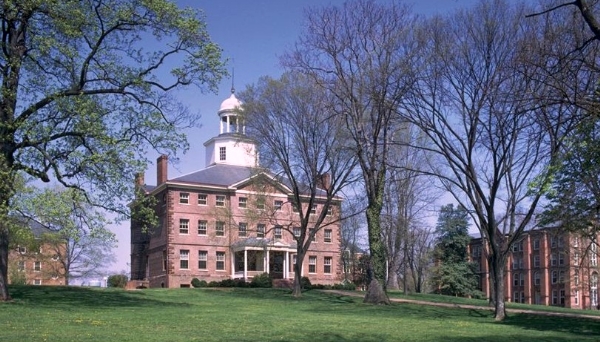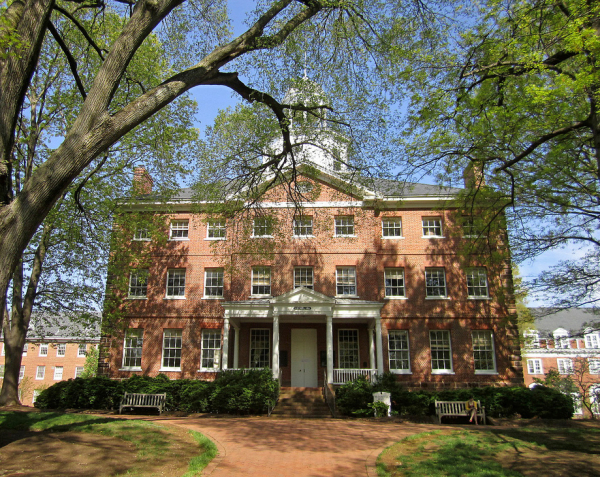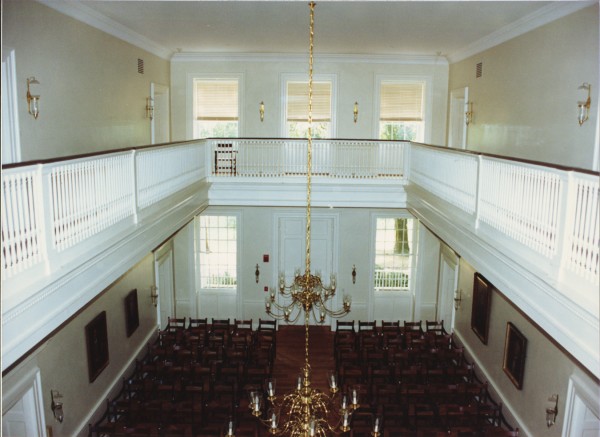|
|
McDowell
Hall, St.
John's College McDowell Hall was designed in 1742 as the Colonial Governor's Mansion. Known as "Bladen's Folly," the incomplete structure was left to deteriorate. Thomas Jefferson in 1766 observed that in Annapolis "they have no public building worth mentioning except a Governor's House, the hull of which after being nearly finished, they have suffered to go to ruin." In 1784 St. John's College acquired the building and completed construction for use as the classroom, dormitory, and administrative college building. McDowell Hall was restored after a fire partially gutted it in 1909. This 250 year old, 23,000 square foot building had received little attention since its 1909 restoration. A variety of interior subdivision, fluorescent lighting, dropped ceilings, and retrofit electrical service compromised the safety and integrity of the building. The multi-use six story building had only one interior stair and no fire suppression system. The wood floor framing system suffered serious unloaded deflection. In addition to correcting these deficiencies, the goal of the renovation was to protect the historic building fabric and return the building to service as if "nothing had changed." All of the 1744 floor systems that survived the 1909 fire were maintained and reinforced. Installation of new services were completely concealed throughout the building. A new interior stair was installed in the West Hall that mirrors the East Hall stair, which was completely rebuilt. New slate roofing, integral gutters, and downspouts were installed, and the exterior stone and brick were very selectively repointed. This 1989 restoration was completed within one year at a cost of $2,500,000. This six-story brick building includes 23,000 square feet of space for classrooms, assembly, and student union with a small food service facility. All interior woodwork and plaster cove moldings were restored. All necessary "modern" fixtures such as smoke detectors, sprinkler heads and lighting have been seamlessly integrated into the historic building. Exhaustive research was conducted through files in the Maryland State Archives, college records, and on-site observations during the demolition phase of the renovations to determine the 1744 floor plan. The result was recognized by the 1991 Preservation Award of the Maryland Historical Trust, and the 1990 Award for Excellence in Architecture from the American Institute of Architects.
|

Bohl Architects
Modern
Homes
Traditional Homes
Los Angeles Projects
New York Projects
Sustainable Design
Historic
Preservation
Publications & Awards
Annapolis
Architecture
About Us
Home
3 Church Circle
Annapolis, MD 21401
410.263.2200
420 Warren Street
Hudson, NY 12526
Chip@BohlArchitects.com
Jessica@BohlArchitects.com
Angela@BohlArchitects.com





